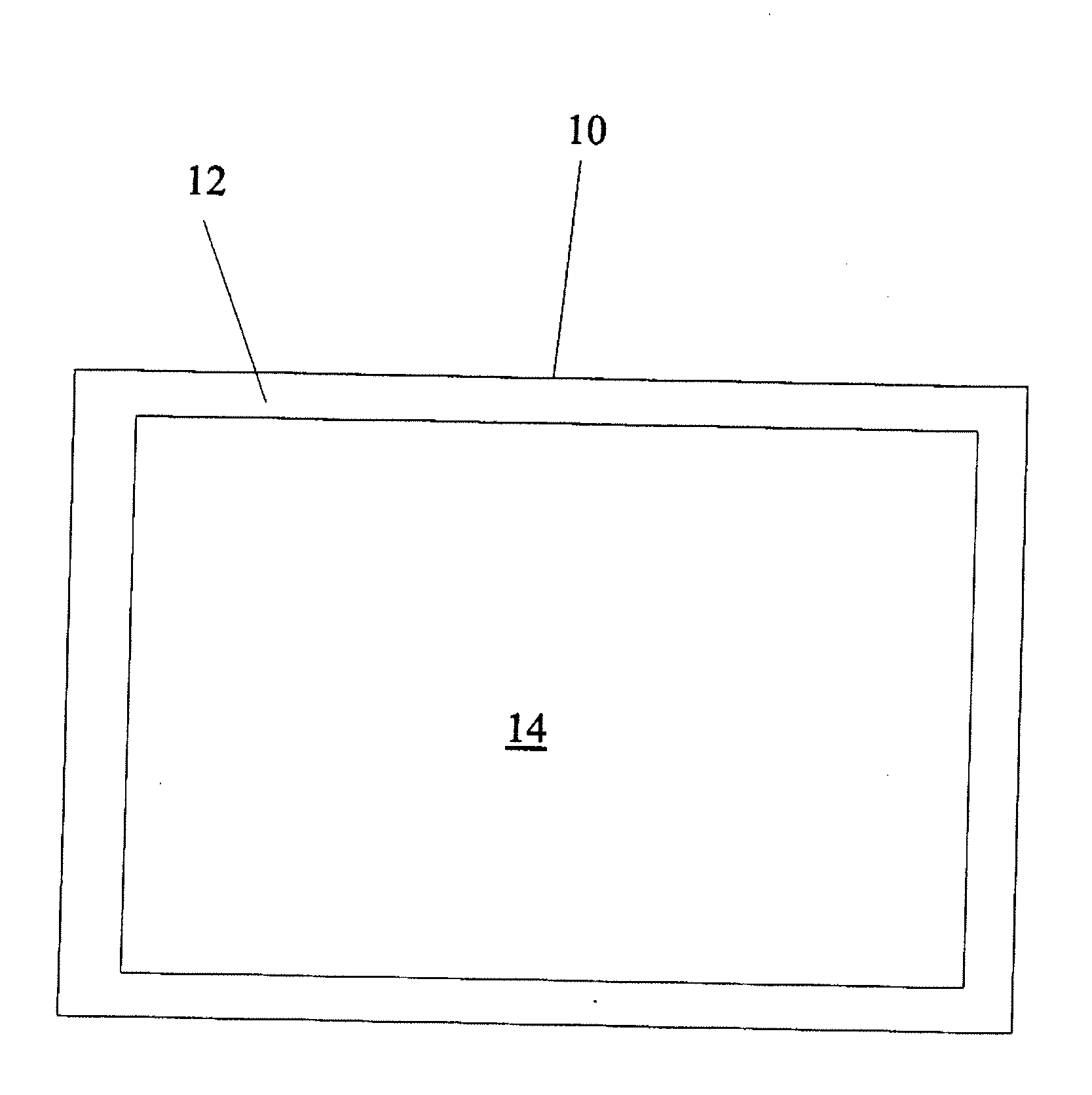Vehicle Glazing With Darkened Areas
a technology of vehicle glazing and darkened areas, applied in the direction of antiglare equipment, superstructure subunits, roofs, etc., can solve the problems of increased danger of breakage, weakened glass body, and reduced resistivity of overglaze color on the surface of glass body
- Summary
- Abstract
- Description
- Claims
- Application Information
AI Technical Summary
Benefits of technology
Problems solved by technology
Method used
Image
Examples
Embodiment Construction
[0020] The drawing shows a vehicle glazing which comprises a glass body 10 and which constitutes part of a glass roof of a passenger car made as a limousine. The illustrated glass roof part is located, for example, above the area of the rear seats of the vehicle interior.
[0021] The glass body 10 has a thickness of roughly 4 mm and has an edge region 12 which is used, for example, to cement the vehicle glazing 10 to the vehicle body. The edge region 12 can be provided with a glass frit formed from an over-glaze color.
[0022] The edge region 12 can be additionally or alternatively provided with a peripheral foam framing of polyurethane for cementing.
[0023] In a large-area central region, the glass body 10 is provided with a black glass primer on its surface so that the vehicle glazing 10 is also made opaque in the region 14.
[0024] Alternatively, can also be provided with a black glass primer only in areas of the central region 14 of the glass body 10, this primer having been applie...
PUM
| Property | Measurement | Unit |
|---|---|---|
| thickness | aaaaa | aaaaa |
| thickness | aaaaa | aaaaa |
| thickness | aaaaa | aaaaa |
Abstract
Description
Claims
Application Information
 Login to View More
Login to View More - R&D
- Intellectual Property
- Life Sciences
- Materials
- Tech Scout
- Unparalleled Data Quality
- Higher Quality Content
- 60% Fewer Hallucinations
Browse by: Latest US Patents, China's latest patents, Technical Efficacy Thesaurus, Application Domain, Technology Topic, Popular Technical Reports.
© 2025 PatSnap. All rights reserved.Legal|Privacy policy|Modern Slavery Act Transparency Statement|Sitemap|About US| Contact US: help@patsnap.com

